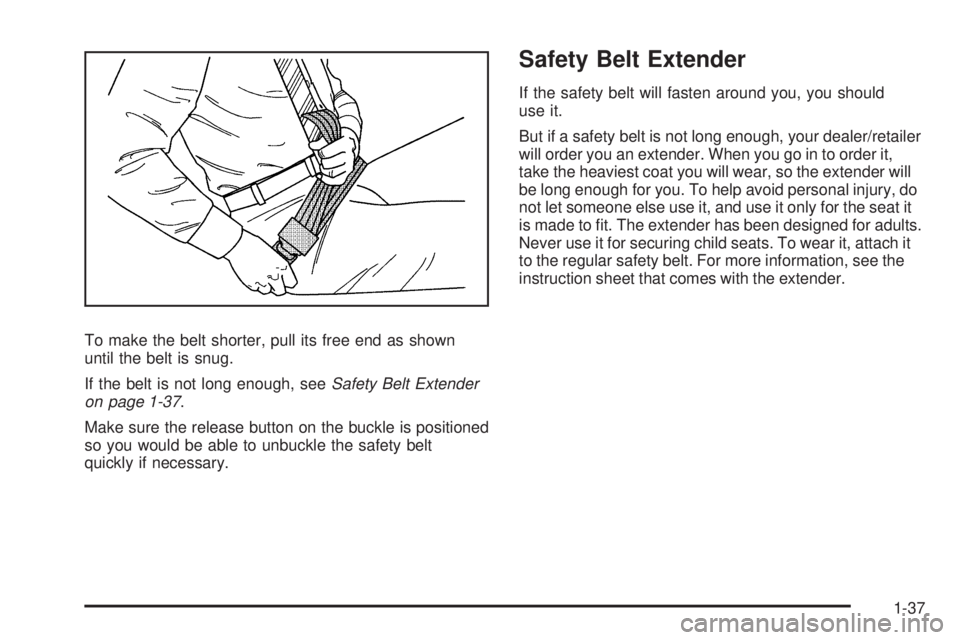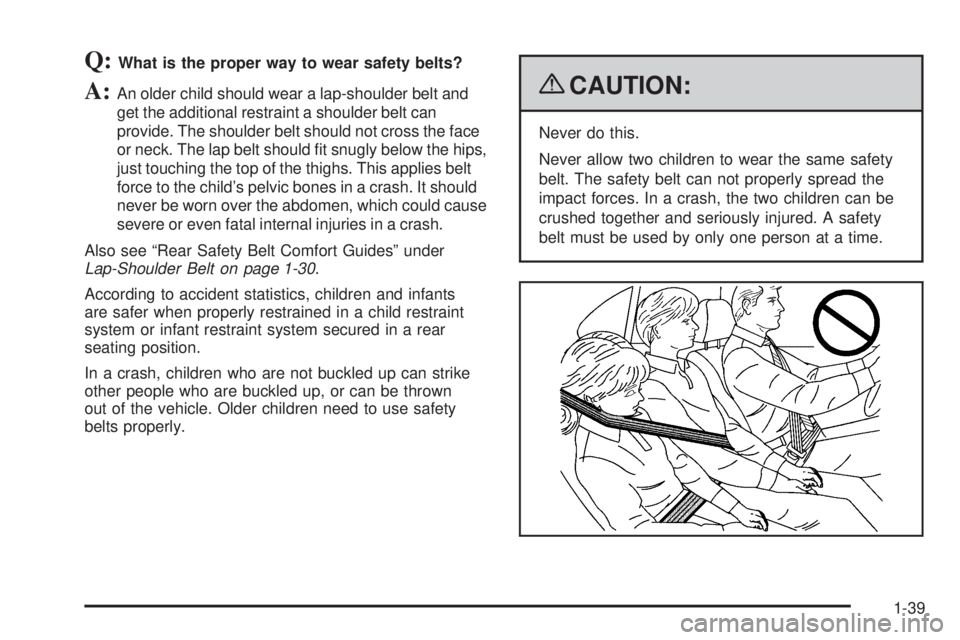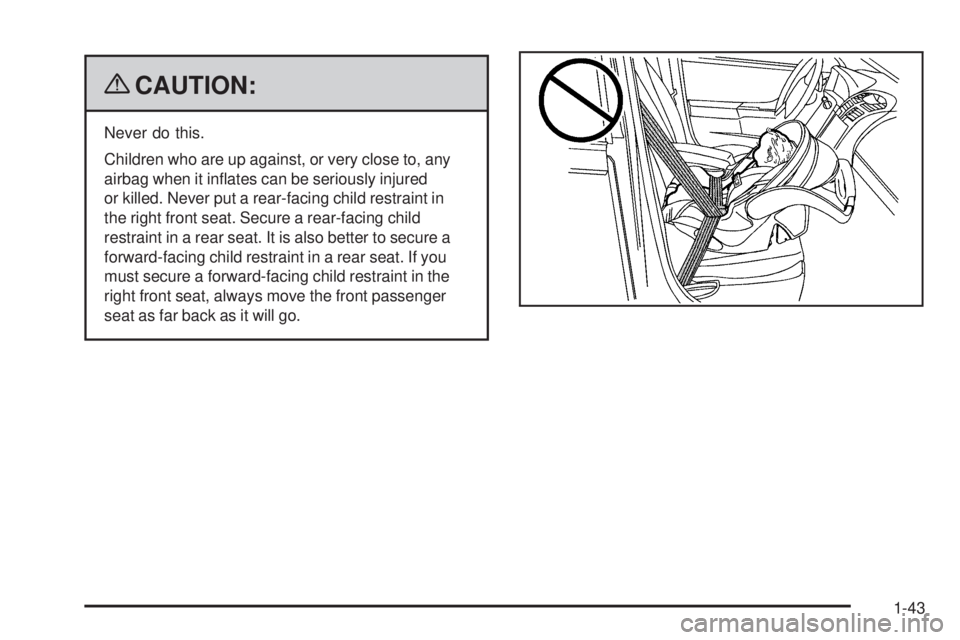2009 GMC SIERRA child seat
[x] Cancel search: child seatPage 1 of 596

Seats and Restraint System............................. 1-1
Head Restraints
......................................... 1-3
Front Seats
............................................... 1-4
Rear Seats
..............................................1-14
Safety Belts
.............................................1-16
Child Restraints
.......................................1-38
Airbag System
.........................................1-73
Restraint System Check
............................1-90
Features and Controls..................................... 2-1
Keys
........................................................ 2-3
Doors and Locks
......................................2-10
Windows
.................................................2-15
Theft-Deterrent Systems
............................2-18
Starting and Operating Your Vehicle
...........2-22
Mirrors
....................................................2-57
Object Detection Systems
..........................2-62
OnStar
®System
......................................2-71
Universal Home Remote System
................2-74
Storage Areas
.........................................2-81
Sunroof
..................................................2-85Instrument Panel............................................. 3-1
Instrument Panel Overview
.......................... 3-4
Climate Controls
......................................3-24
Warning Lights, Gages, and Indicators
........3-33
Driver Information Center (DIC)
..................3-53
Audio System(s)
.......................................3-85
Driving Your Vehicle....................................... 4-1
Your Driving, the Road, and the Vehicle
....... 4-2
Towing
...................................................4-45
Service and Appearance Care.......................... 5-1
Service
..................................................... 5-4
Fuel
......................................................... 5-6
Checking Things Under the Hood
...............5-12
Rear Axle
...............................................5-49
Four-Wheel Drive
.....................................5-51
Front Axle
...............................................5-53
Noise Control System
...............................5-54
Headlamp Aiming
.....................................5-55
Bulb Replacement
....................................5-58
2009 GMC Sierra Owner ManualM
Page 7 of 596

Head Restraints...............................................1-3
Front Seats......................................................1-4
Manual Seats................................................1-4
Power Seats..................................................1-5
Manual Lumbar..............................................1-6
Power Lumbar ...............................................1-7
Heated Seats.................................................1-8
Memory Seat, Mirrors, and Pedals....................1-8
Reclining Seatbacks......................................1-10
Seatback Latches.........................................1-13
Center Seat.................................................1-14
Rear Seats.....................................................1-14
Rear Seat Operation (Extended Cab)...............1-14
Rear Seat Operation (All Except
Extended Cab)..........................................1-15
Safety Belts...................................................1-16
Safety Belts: They Are for Everyone................1-16
How to Wear Safety Belts Properly.................1-21
Lap-Shoulder Belt.........................................1-30
Safety Belt Use During Pregnancy..................1-36
Lap Belt (Crew and Extended Cab).................1-36
Safety Belt Extender.....................................1-37Child Restraints.............................................1-38
Older Children..............................................1-38
Infants and Young Children............................1-41
Child Restraint Systems.................................1-45
Where to Put the Restraint.............................1-48
Lower Anchors and Tethers for
Children (LATCH)......................................1-49
Securing a Child Restraint in a
Rear Seat Position....................................1-58
Securing a Child Restraint in the
Center Front Seat Position..........................1-61
Securing a Child Restraint in the Right
Front Seat Position (With Airbag
Off Switch)...............................................1-62
Securing a Child Restraint in
the Right Front Seat Position
(With Passenger Sensing System)...............1-66
Securing a Child Restraint in the
Right Front Seat Position (Heavy Duty
Crew Cab Only).......................................
.1-70
Section 1 Seats and Restraint System
1-1
Page 36 of 596

Lap-Shoulder Belt
If your vehicle is a regular cab, then all seating positions
in the vehicle have a lap-shoulder belt. If your vehicle is a
crew or extended cab, then all seating positions in the
vehicle have a lap-shoulder belt except for the center
front passenger position (if equipped), which has a lap
belt. SeeLap Belt (Crew and Extended Cab) on
page 1-36for more information.
The following instructions explain how to wear a
lap-shoulder belt properly.
1. Adjust the seat, if the seat is adjustable, so you
can sit up straight. To see how, see “Seats” in
the Index.
2. Pick up the latch plate and pull the belt across you.
Do not let it get twisted.
The lap-shoulder belt may lock if you pull the belt
across you very quickly. If this happens, let the belt
go back slightly to unlock it. Then pull the belt
across you more slowly.
If the shoulder portion of a passenger belt is pulled
out all the way, the child restraint locking feature
may be engaged. If this happens, let the belt
go back all the way and start again.
Engaging the child restraint locking feature may
affect the passenger sensing system. SeePassenger
Sensing System on page 1-84for more information.If the belt stops before it reaches the buckle, when
using the lap-shoulder belt in a rear center seating
position of a crew-cab, tilt the latch plate and keep
pulling the safety belt until it can be buckled.
1-30
Page 40 of 596

Rear Safety Belt Comfort Guides
Rear shoulder belt comfort guides may provide added
safety belt comfort for older children who have outgrown
booster seats and for some adults. When installed on
a shoulder belt, the comfort guide positions the belt
away from the neck and head.
There is one guide for each outboard passenger position
in the rear seat. Here is how to install a comfort guide to
the shoulder belt:
1. Remove the guide from its storage clip on the
interior body.
2. Place the guide over the belt and insert the two
edges of the belt into the slots of the guide.3. Be sure that the belt is not twisted and it lies �at.
The elastic cord must be under the belt and the
guide on top.
1-34
Page 43 of 596

To make the belt shorter, pull its free end as shown
until the belt is snug.
If the belt is not long enough, seeSafety Belt Extender
on page 1-37.
Make sure the release button on the buckle is positioned
so you would be able to unbuckle the safety belt
quickly if necessary.
Safety Belt Extender
If the safety belt will fasten around you, you should
use it.
But if a safety belt is not long enough, your dealer/retailer
will order you an extender. When you go in to order it,
take the heaviest coat you will wear, so the extender will
be long enough for you. To help avoid personal injury, do
not let someone else use it, and use it only for the seat it
is made to �t. The extender has been designed for adults.
Never use it for securing child seats. To wear it, attach it
to the regular safety belt. For more information, see the
instruction sheet that comes with the extender.
1-37
Page 44 of 596

Child Restraints
Older Children
Older children who have outgrown booster seats should
wear the vehicle’s safety belts.The manufacturer’s instructions that come with the
booster seat state the weight and height limitations for
that booster. Use a booster seat with a lap-shoulder belt
until the child passes the below �t test:
Sit all the way back on the seat. Do the knees bend
at the seat edge? If yes, continue. If no, return to
the booster seat.
Buckle the lap-shoulder belt. Does the shoulder belt
rest on the shoulder? If yes, continue. If no, try using
the rear safety belt comfort guide. See “Rear Safety
Belt Comfort Guides” underLap-Shoulder Belt on
page 1-30for more information. If the shoulder belt
still does not rest on the shoulder, then return to the
booster seat.
Does the lap belt �t low and snug on the hips,
touching the thighs? If yes, continue. If no, return to
the booster seat.
Can proper safety belt �t be maintained for the length
of the trip? If yes, continue. If no, return to the
booster seat.
If you have the choice, a child should sit in a position
with a lap-shoulder belt and get the additional
restraint a shoulder belt can provide.
1-38
Page 45 of 596

Q:What is the proper way to wear safety belts?
A:An older child should wear a lap-shoulder belt and
get the additional restraint a shoulder belt can
provide. The shoulder belt should not cross the face
or neck. The lap belt should �t snugly below the hips,
just touching the top of the thighs. This applies belt
force to the child’s pelvic bones in a crash. It should
never be worn over the abdomen, which could cause
severe or even fatal internal injuries in a crash.
Also see “Rear Safety Belt Comfort Guides” under
Lap-Shoulder Belt on page 1-30.
According to accident statistics, children and infants
are safer when properly restrained in a child restraint
system or infant restraint system secured in a rear
seating position.
In a crash, children who are not buckled up can strike
other people who are buckled up, or can be thrown
out of the vehicle. Older children need to use safety
belts properly.{CAUTION:
Never do this.
Never allow two children to wear the same safety
belt. The safety belt can not properly spread the
impact forces. In a crash, the two children can be
crushed together and seriously injured. A safety
belt must be used by only one person at a time.
1-39
Page 49 of 596

{CAUTION:
Never do this.
Children who are up against, or very close to, any
airbag when it in�ates can be seriously injured
or killed. Never put a rear-facing child restraint in
the right front seat. Secure a rear-facing child
restraint in a rear seat. It is also better to secure a
forward-facing child restraint in a rear seat. If you
must secure a forward-facing child restraint in the
right front seat, always move the front passenger
seat as far back as it will go.
1-43